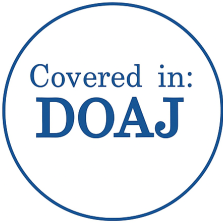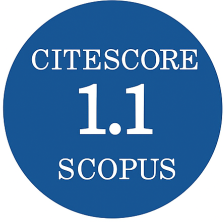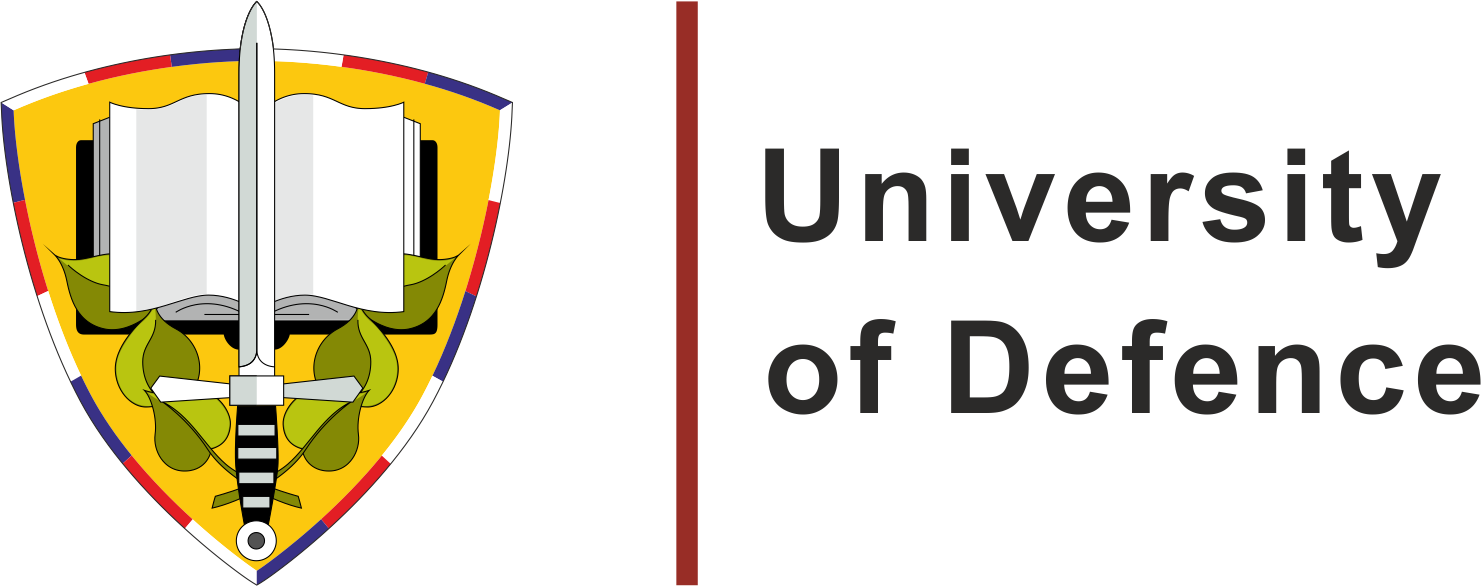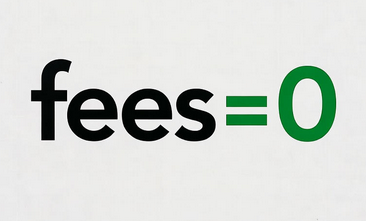Calculation of Frequency-Territorial Separation Norms for Decimeter Radio-Electronic Means
DOI:
https://doi.org/10.3849/aimt.01962Keywords:
electromagnetic compatibility, frequency separation, territorial separation, multiplier, attenuationAbstract
The paper considers the main models of radio wave propagation used in the calculation of radio lines in the line-of-sight area. It has been shown that to calculate the frequency-territorial separation norms, the Vvedensky reflective model is advisable. The methodology for calculating the frequency-territorial separation norms and the peculiarities of its application for radio-electronic means operating in the decimeter-wave range are determined. Failure to take into account the attenuation multiplier during radio wave propagation within the scope of the Vvedensky formula leads to an error in the calculation of the interference power at the input of the interference receiver-receptor and to an erroneous increase in frequency separation during the development of frequency-territorial separation norms for decimeter radio-electronic means.
References
CHRISTOPOULOS, C. Principles and Techniques of Electromagnetic Compatibility. 3rd ed. Boca Raton: CRC Press, 2022. ISBN 0-367-53361-8
Recommendation ITU-R P.1546-6. Method for Point-to-Area Predictions for Terrestrial Services in the Frequency Range 30 MHz to 4 000 MHz. Geneva: ITU, 2019
Recommendation ITU-R P.370. VHF and UHF Propagation Curves for the Frequency Range 30 MHz to 1 000 MHz. Geneva: ITU, 1991
Recommendation ITU-R P.529-3. Prediction Methods for the Terrestrial Land Mobile Service in the VHF and UHF Bands. Geneva: ITU, 1999
Recommendation ITU-R P.1406-2. Propagation Effects Relating to Terrestrial Land Mobile Service in the VHF and UHF Bands. Geneva: ITU, 2015
Recommendation ITU-R SM.337-6. Frequency and Distance Separations. Geneva: ITU, 2019
Recommendation ITU-R P.1057-7. Probability Distributions Relevant to Radiowave Propagation Modelling. Geneva: ITU, 2022
Recommendation ITU-R P.525-5. Calculation of Free-Space Attenuation. Geneva: ITU, 2024
Recommendation ITU-R P.452-18. Prediction Procedure for the Evaluation of Interference Between Stations on the Surface of the Earth at Frequencies Above About 100 MHz. Geneva: ITU, 2023
GOROBETS, N.N. Using Polarization Effects to Improve the Electromagnetic Compatibility of Radio Electronic Equipment. Telecommunications and Radio Engineering, 1997, 51(1), pp. 89–96. https://doi.org/10.1615/TelecomRadEng.v51.i1.90
BALDWIN, T.E. and G.T. CAPRARO. Intrasystem Electromagnetic Compatibility Analysis Program (IEMCAP). IEEE Transactions on Electromagnetic Compatibility, 1980, 22(4), pp. 224–228. https://doi.org/10.1109/TEMC.1980.303859
ZHAO, Y., W. YAN, J. SUN, M. ZHOU and Z. MENG. Electromagnetic Compatibility: Principles and Applications. Singapore: Springer, 2021. ISBN 978-981-16-6451-9
WILLIAMS, T. EMC for Product Designers. 3rd ed. Oxford: Newnes, 2001. ISBN 0-7506-4930-5
KUNZ, K.S. Finite Element/Finite Difference Modelling in Electromagnetic Compatibility. In: Proceedings of the 10th International Zurich Symposium and Technical Exhibition on Electromagnetic Compatibility. Zurich: IEEE, 1993. https://doi.org/10.23919/EMC.1993.10781226
MA, M.T. and G.H. KOEPKE. A Method to Quantify the Radiation Characteristics of an Unknown Interference Source. Gaithersburg: National Bureau of Standards, 1982
TESCHE, M., M. IANOZ and T. KARLSSON. EMC Analysis Methods and Computational Models. New York: Wiley, 1996. ISBN 0-471-15573-X
BOOTON, R.C. Computational Methods for Electromagnetics and Microwaves. New York: Wiley, 1992. ISBN 0-471-52804-8
SADIKU, M.N.O. Numerical Techniques in Electromagnetics. 2nd ed. Boca Raton: CRC Press, 2000. ISBN 0-429-19608-3
KUBINA, S.J. Numerical Analysis and Modelling Techniques. In: CROVETTI, P.S., ed. Electromagnetic Interference and Electromagnetic Compatibility. Loughton: AGARD, 1991, pp. 3.1–3.18. ISBN 92-835-0620-0
PEREZ, R. Solution of EMC Problems via Analysis Methods: A Review. In: Proceedings of the 1992 IEEE Regional Symposium on Electromagnetic Compatibility. Tel Aviv: IEEE, 1992. https://doi.org/10.1109/ISEMC.1992.257532
HUBING, T. and M. ALI. EMC Applications of EMAP-2: a 3D Finite Element Modeling Code. In: Proceedings of the 1993 International Symposium on Electromagnetic Compatibility. Dallas: IEEE, 1993. https://doi.org/10.1109/ISEMC.1993.473730
TSYANENKA, D.A., E.V. SINKEVICH, Y.Y. ARLOU and S.V. MALY. Computationally-Effective Worst-Case Estimation of Currents in Transmission Lines for EMC Diagnostics of Big Systems. In: Proceedings of the EMC 2015 Joint IEEE International Symposium on EMC and EMC Europe. Dresden: IEEE, 2015. https://doi.org/10.1109/ISEMC.2015.7256334
IVANOV, V.O., L.V. SIBRUK and O.V. KULENKO. Conditions for Ensuring Electromagnetic Compatibility in the Grouping of Radio Electronic Systems. Electronics and Control Systems (in Ukrainian), 2009, 1(19), pp. 76–81. https://doi.org/10.18372/1990-5548.19.666
KOVALENKO, I., S. BRIGADIR and Y. MAZNICHENKO. Methods of Electromagnetic Compatibility Telecommunication Means of Special Purpose. Collection of Scientific Papers of the Military Institute of Telecommunications and Informatization (in Ukrainian) [online], 2016, 1, pp. 71–80 [viewed 2024-11-15]. Available from: http://nbuv.gov.ua/UJRN/Znpviti_2016_1_11
KOVALENKO, I.G., V.V. MALYKH and V.I. MAKARCHUK. General Methodology and Algorithm for Calculating the Electromagnetic Compatibility of Radioelectronic Devices. Collection of Scientific Works of the Military Institute of Telecommunications and Informatization (in Ukrainian) [online], 2020, 2, pp. 17–27 [viewed 2024-11-12]. Available from: https://hups.mil.gov.ua/assets/uploads/library/nadhodzhennya/zhovten-gruden-2020/pdf/27.pdf
FEOKTISTOV, Y.A., V.V. MATASOV, L.I. BATURIN and V.I. SELEZNEV. Theory and Methods for Assessing Electromagnetic Compatibility of Radio Electronic Equipment (in Russian). Moscow: Radio and Communications, 1988. ISBN 978-5-256-00026-4
KAMALTYNOV, G., V. POZDNIAK and K. SHUTKO. Features of Assessment of Electromagnetic Compatibility of Radio Location Devices Located at a Common Position (in Ukrainian). Scientific Works of Kharkiv National Air Force University, 2024, 2(80), pp. 106–112. https://doi.org/10.30748/zhups.2024.80.14
QIANG, Z., H. YAGUO, W. LU, L. KAI and Y. YUAN. Research on Electromagnetic Compatibility Technology Based on Airborne Electronic Equipment. In: Proceedings of the 10th Chinese Society of Aeronautics and Astronautics Youth Forum. Singapore: Springer, 2023. ISBN 978-981-19-7651-3
NARYSHKIN, E.M. and V.P. SERKOV. Wave Service and Antenna Devices. Part 1: Theory of Electromagnetic Field and Radio Wave Propagation (in Russian). Moscow: Ministry of Defense of the USSR, 1982.
HATA, M. Empirical Formula for Propagation Loss in Land Mobile Radio Services. IEEE Transactions on Vehicular Technology, 1980, 29(3), pp. 317–325. https://doi.org/10.1109/T-VT.1980.23859
YUVRAJ, S. Comparison of Okumura, Hata and COST-231 Models on the Basis of Path Loss and Signal Strength. International Journal of Computer Applications, 2012, 59(11), pp. 37–41. https://doi.org/10.5120/9594-4216
MARDENI, R. and K.F. KWAN. Optimization of Hata Propagation Prediction Model in Suburban Area in Malaysia. Progress in Electromagnetics Research, 2010, 13, pp. 91–106. https://doi.org/10.2528/PIERC10011804
HURSKYI, T., E. STEPANENKO and A. SHISHATSKYI. Evaluation of Boundary Communication Range of Modern Radio and Radio Relay Links. Collection of Scientific Papers of the Military Institute of Telecommunications and Informatization (in Ukrainian) [online], 2019, 1, pp. 6–17 [viewed 2024-11-18]. Available from: http://nbuv.gov.ua/UJRN/Znpviti_2019_1_3
SAAKIAN, A. Radio Wave Propagation Fundamentals. 2nd ed. Boston: Artech House, 2020. ISBN 1-63081-844-5.
Downloads
Published
License
Copyright (c) 2025 Advances in Military Technology

This work is licensed under a Creative Commons Attribution-NonCommercial 4.0 International License.
Authors who publish with this journal agree to the following terms:
1. Authors retain copyright and grant the journal right of first publication with the work simultaneously licensed under a Creative Commons Attribution License that allows others to share the work with an acknowledgement of the work's authorship and initial publication in this journal.
2. Authors are able to enter into separate, additional contractual arrangements for the non-exclusive distribution of the journal's published version of the work (e.g., post it to an institutional repository or publish it in a book), with an acknowledgement of its initial publication in this journal.
3. Authors are permitted and encouraged to post their work online (e.g., in institutional repositories or on their website) prior to and during the submission process, as it can lead to productive exchanges, as well as earlier and greater citation of published work.
Users can use, reuse and build upon the material published in the journal for any purpose, even commercially.






